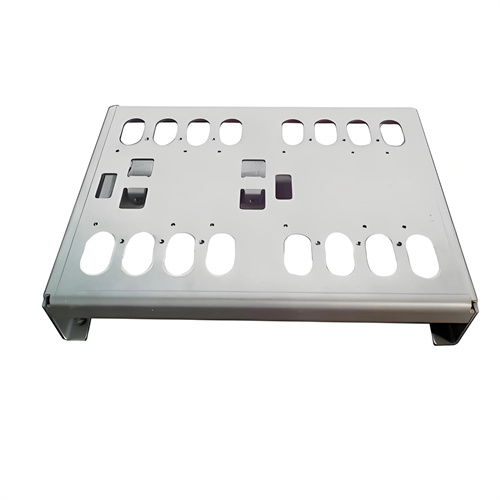Galvanized low carbon steel wire for communication lines
Galvanized low-carbon steel wire for communication lines is a specialized material used in the production of communication cables, fiber optic cable reinforcements, and overhead communication lines. Featuring excellent conductivity, corrosion resistance, and mechanical properties, it plays a vital role in the construction of communication networks such as telecommunications, broadcasting, and the internet. This type of steel wire is typically made from low-carbon steels such as Q195 and Q235, with a carbon content of 0.12-0.22%, a tensile strength of 370-500 MPa, and an elongation of 15% or higher. It exhibits excellent plasticity and twistability, meeting the twisting requirements of communication lines. The zinc coating on the surface is ≥85μm thick (optionally thicker coating depending on the operating environment), exhibits strong zinc adhesion (no detachment during winding tests), and offers salt spray resistance for ≥96 hours, making it resistant to corrosion in outdoor environments.

The production process of galvanized low-carbon steel wire for telecommunication lines requires multiple precision processing steps, including wire drawing and galvanizing. First, high-quality hot-rolled wire rod (5.5-12mm diameter) is selected as the raw material. It undergoes pickling to remove surface scale and then undergoes phosphating (phosphating coating weight 3-5g/m²) to improve the lubricity and adhesion of the steel wire. The wire drawing process uses multiple continuous passes to draw the wire rod to the target diameter (0.5-4.0mm), with deformation controlled within 10-20% per pass to ensure dimensional accuracy (diameter tolerance ±0.01mm) and uniform mechanical properties. Hot-dip galvanizing is typically used, where the steel wire is immersed in molten zinc at 440-460°C. The galvanizing time (3-5 seconds) and composition are controlled to achieve a uniform zinc coating. The finished steel wire is then cooled, straightened, and wound up. Finally, zinc coating thickness testing, tensile testing, and corrosion resistance testing are performed to ensure product quality.

In the field of overhead communication lines, galvanized low-carbon steel wire is the core material for conductors and suspension wires. Overhead communication lines in rural and remote areas use seven-strand twisted galvanized steel wire with a diameter of 2.5-4.0mm. Its high strength can withstand its own weight and wind loads. A telecommunications operator’s rural lines have seen a 60% reduction in wire breakage rates after adopting this wire. Urban overhead optical cables use suspension wires made of 1.6-2.2mm galvanized steel wire. These wires are twisted together to form high-strength suspension wires capable of hanging weights exceeding 50kg. One city’s optical cable lines experienced no noticeable sagging during typhoons. In railway communication systems, the reinforcement of communication lines along the line is made of galvanized steel wire, which can withstand vibrations generated by trains and ensure stable communication signals. This has reduced the failure rate of one railway communication line by 30%.

In the manufacture of communication cables and optical cables, galvanized low-carbon steel wire is used to reinforce the core, enhancing the cable’s structural strength. The central reinforcement core of outdoor optical cables utilizes 0.9-2.0mm galvanized steel wire, capable of withstanding the traction forces (≥1500N) during installation. One optical cable manufacturer has increased the installation length of their products to 2000 meters per reel by using this wire. The armor layer of submarine communication cables utilizes 2.5-4.0mm galvanized steel wire, twisted together in multiple passes to form an armored structure that resists seawater pressure and marine bio-corrosion. The use of this wire in one transoceanic communication cable has extended its service life to 25 years. In optical fiber composite overhead ground wires (OPGWs), galvanized steel wire serves as a load-bearing element, combining communication and lightning protection functions. Using this wire in the OPGW of a high-voltage transmission line has reduced communication interruption rates by 80%.

As communication networks evolve toward 5G and fiber optics, the performance of galvanized low-carbon steel wire used in communication lines continues to improve. Manufacturers have developed high-strength galvanized steel wire (tensile strength 550-650 MPa) for use in long-span overhead communication lines with spans exceeding 500 meters, reducing the number of poles and towers. For the high-humidity coastal environments, zinc-aluminum alloy-coated steel wire (95% zinc, 5% aluminum) has been developed, with salt spray resistance improved to over 200 hours, extending the service life of communication lines in one coastal region to 15 years. In terms of process innovation, online continuous galvanizing technology is used, with a zinc layer thickness tolerance of ±5μm, significantly improving product consistency. In the future, with the advancement of “new infrastructure” and the increasing density of communication networks, demand for galvanized low-carbon steel wire for communication lines will continue to grow, driving the development of materials with higher strength and greater corrosion resistance.
